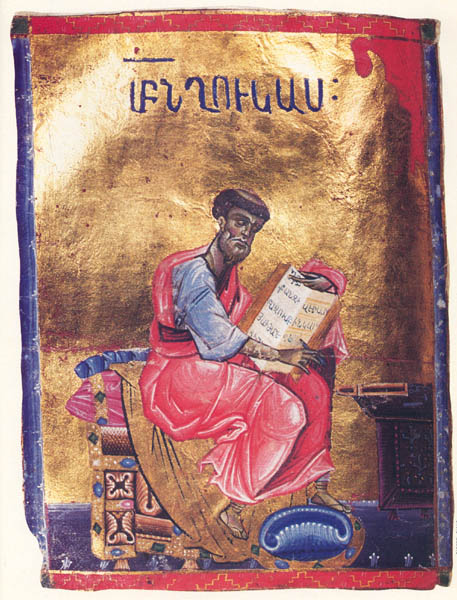Image Details

David Harris
Luke, pen in hand, labors on his Gospel. Painted by Thoros Roslin in 1262, at Hromkla, Cilicia (now part of Turkey), this portrait of Luke faces the opening page of his Gospel in the Leo and Karen Gospel, an illuminated manuscript containing all four Gospels.
Scholars believe that the Gospels of Luke and Matthew are expansions of Mark’s Gospel, with additions taken from a lost source they designate “Q.” The additions include genealogies, details of Jesus’ birth, infancy stories and resurrection appearances. One unique element in Luke’s Gospel is his description of Jesus’ ascent into heaven. Luke’s account also differs from the other Gospels by the absence of the idea of atonement in relation to Jesus’ death. Luke saw Jesus principally as a prophet-martyr who died out of divine necessity.
Returning to a more traditional view, largely abandoned by 20th-century scholars, Professor David Aune argues that the Gospels, in their literary structure, belong to the genre of biography. In his view, the Gospels comprise a trinity of elements: Jewish background, Christian message and Hellenistic form.
